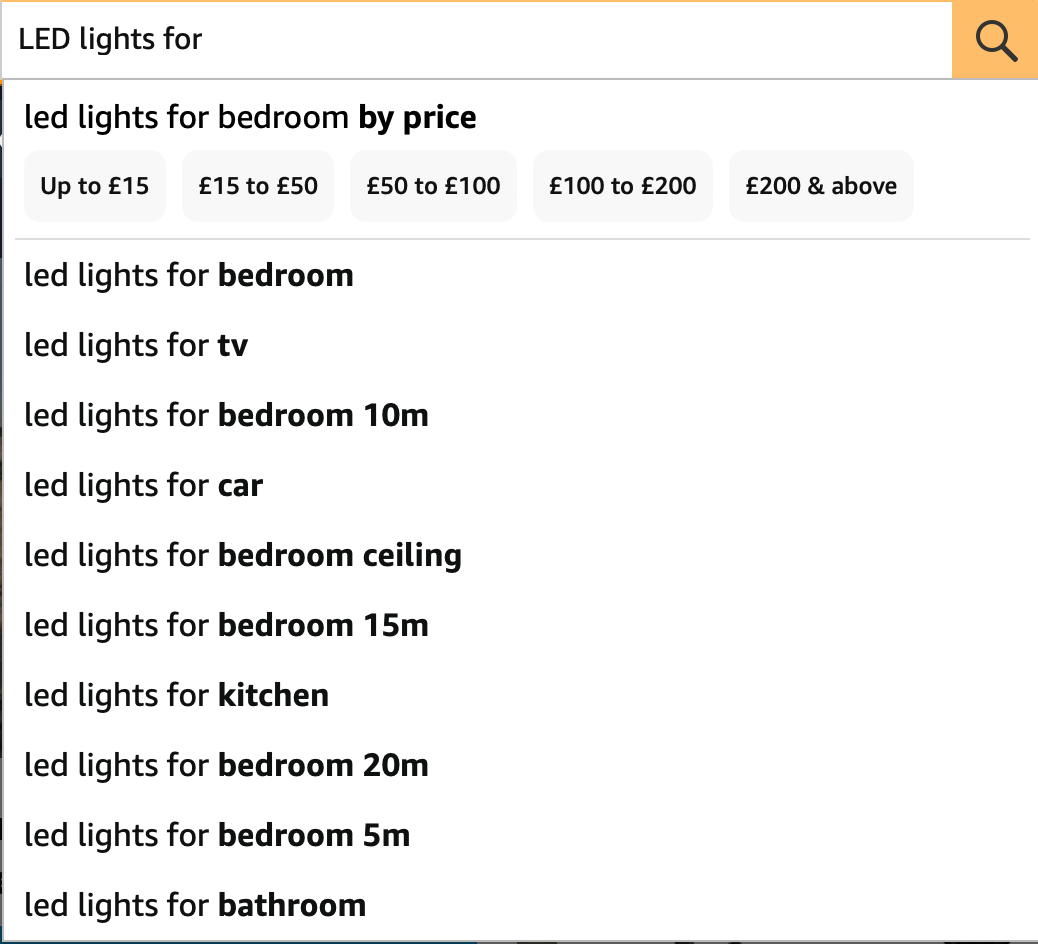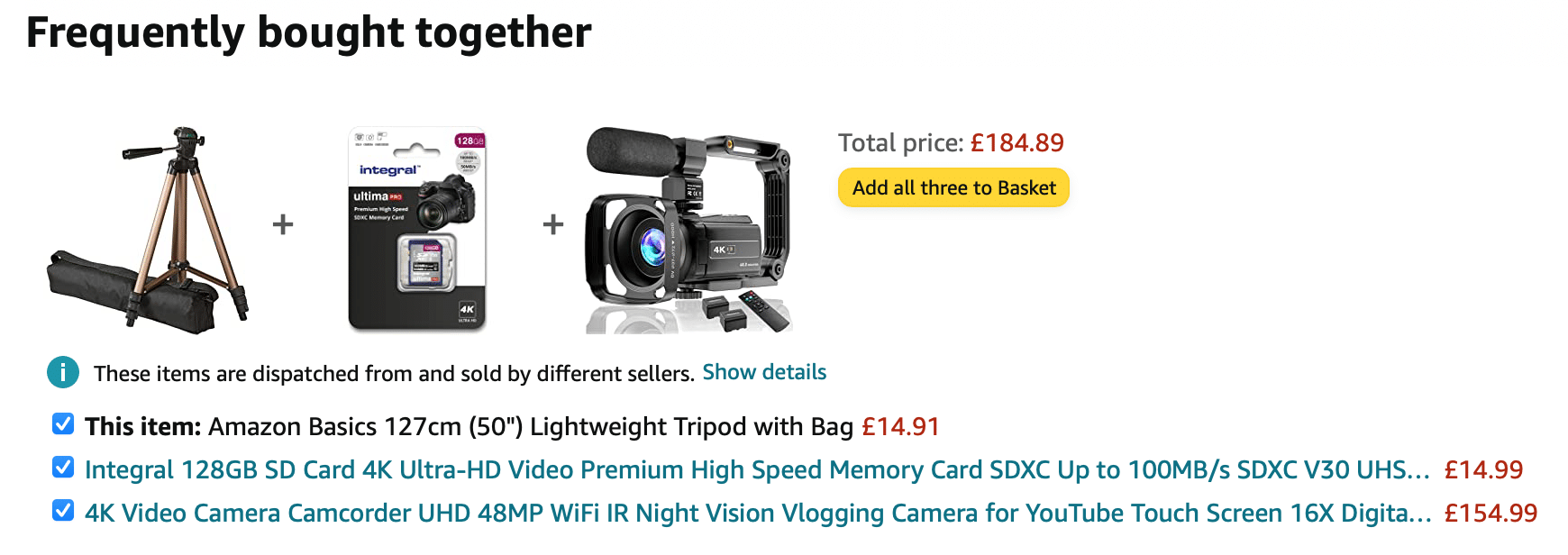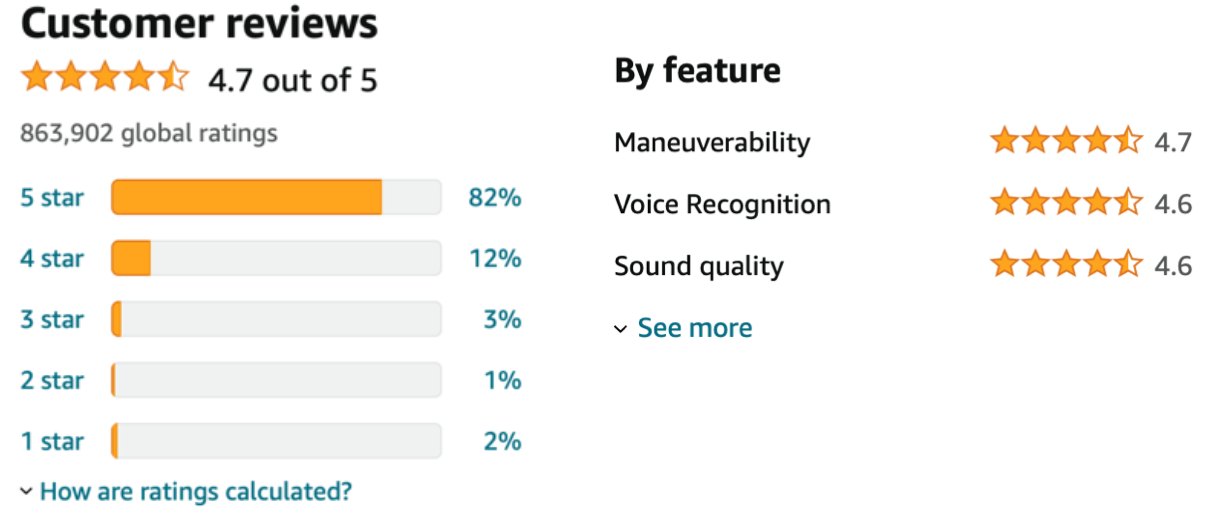Implementing an Amazon optimisation strategy is essential as an Amazon Seller. The steps in this approach will enable you to ensure your products listings are selling consistently, especially if you’re relatively new to the platform.
After all, Amazon was responsible for some 10% of all online retail sales in Europe last year, and this trend isn’t slowing down.
Given this, the need to optimise your product listings beyond the level at which your competitors are has never been more essential. Top rankings in Amazon, means top conversion rates and volume sales.
At Arthia, we’ve gathered below five simple and proven Amazon optimisation techniques you can apply in order to make your product stand out above the competition.
We will explore:
- Keywords
- Titles
- Descriptions
- Images
- Reviews
1. Better Keyword Selection
The foundation to ranking any Amazon product is the keyword. The buyer’s first interaction with Amazon as a channel is most often the search box – and the keywords used are those the buyer believes will lead them to your product.
Ensuring your product uses those same keywords is very much the first step.
Amazon Optimisation 1: Understand the keywords your customers use
To get started, use Amazon’s search box to discover keywords. This is a fast, free way of starting the Amazon keyword research process. Just type words related to your product, and see which words Amazon commonly associates with them:

Once you know the keywords you’re targeting through careful Amazon Keyword Research these keywords can be added to your product title, and within your product’s descriptive content.
A common mistake with first time sellers is misspelling or misusing keywords – which can not only reduce your product visibility, but also erode your customer’s trust. Our top tip is to double check your listing before hitting the publish button.
Amazon also affords sellers the opportunity to include a list of “backend” keywords used only to enhance product discoverability. This stage of optimisation requires extra thought as you should never use keywords you’ve already used in your product title and description text.
Finally, you can (and should) add keywords related to complementary products in your hidden keywords fields. This increases your chances of your product appearing in the “bought together” call out.

2. Perfecting Product Title
The title is the most important part of your listing. Aside your product image, the title is the very first thing the customer will see when viewing product in search results. The closer the title is to the customers search the more likely it will rank higher and generate sales.
Amazon Optimisation 2: How to create a winning product title
For most categories, Amazon allows a product title length of 250 characters – but Amazon guidelines recommend you aim for just 80.
The title needs to give the buyer enough information to decide if they want to view the product further. Therefore include only the most important information. This might be size or colour options in some niches, in others it might be product dimensions or specifications like wattage or construction material.
It would be a waste of time filling your titles with every single keyword. 250 characters won’t go far and besides, the buyer would not look at them all!
In addition, there are lots of things Amazon is looking to reward you for:
- Avoid using large blocks of CAPS
- Capitalising the first letter of each word, excluding articles, prepositions, conjunctions (e.g. a, in, on, and).
- Using numeric symbols where possible, over spelling the numbers out (e.g 4, not Four)
- Do not use your merchant or seller name in the title
- Size and Colours should only be used in the titles of child ASINs, not the main titles.
- Never use any of these restricted words (Arthia is a UK based Amazon Agency so we’ve linked to restricted list for the UK only.
Arthia also work with clients based in the USA and Europe, and these are subject to their own list of restricted phrases.
3.Elaborate In The Product Description
Amazon allows up to 2000 characters for your product description. therefore the description should elaborate on previous points or offer detail about the product, such as, material, dynamics and any extra information about the product or the seller.
Amazon Optimisation 3: How to effectively utilise your product descriptions
As with your keyword research for your titles, look at the common keywords used between the existing best sellers in your categories in their own product descriptions, and include these.
Above all, make sure your description is written with the buyer in mind.
It is pointless stuffing your description full of keywords if it then fails to answer the questions your potential customers have – and need answering in order to make the decision to purchase. This means moving away from selling your product based on it’s features (although features are important) and focusing on the benefits your products offer to the end user.
For example a basic description for an ergonomic pencil grip might read:
“This ergonomic grip fits any pen or pencil”
But a good description would read:
“Our ergonomic grips are designed for children who are either learning to write or have difficult to hold pens and pencils.
Our specialist training pencil grips help to develop children’s interest in writing, by removing the barriers associated with difficulty in gripping the standard pen or pencil. Not only is this suitable for children, but it can be used by adults who want to improve and correct bad hand writing posture developed during childhood.”
Breaking your long descriptions down with bullet points also makes the content easier to digest for your customers:
- Our ergonomic grips are designed for children who are either learning to write or have difficult to hold pens and pencils.
- Our specialist training pencil grips help to develop children’s interest in writing, by removing the barriers associated with difficulty in gripping the standard pen or pencil.
- Not only is this suitable for children, but it can be used by adults who want to improve and correct bad hand writing posture developed during childhood.
4. High Quality Images
Amazon allows you as many as nine product images – including a lead image. Amazon shoppers are savvy, so grainy, low resolution product photography undermines their trust in your brand, especially at a time when lots of low quality, imitation and counterfeit goods slipping through the net on other e-commerce platforms.
Amazon Optimisation 4: Creating great product imagery
For all products, using a white background (RGB 255, 255, 255) with a 1:1 aspect ration (perfect square) for your lead image is a requirement. For your other images, display your product from different angles, show the product in use and include a photo of the product packaging. Your lead product image should take up about 85% of the white space.
Too much white space and your product won’t be visible among the other search results thumbnails, leading to much lower click through rates and bombing rankings.
Your lead image can’t include text or overlays – but later images can.
Using all of your image slots is also important, as Amazon seemingly gives more weight to more “complete” listings. If you’re adding an explainer video this takes up slot #7.
Other images you should consider:
- Front, back & sides of your product
- Your product in its packaging
- Your product in use
Your product overlaid with key features in bullet points, graphics and/or icons.One of the most common reasons for negative feedback comes from buyers misunderstanding the true size of your product, so furthermore your images should show:
- Scale of the product (in hand or against a human outline)
- Infographic / data tables to demonstrate sizing

5. Generate Reviews
Finally, one of the most important factors we can influence to boost rankings is product reviews. Reviews provide proof that your product matches its description, and that it meets the standards expected by consumer. This being the case, the number of reviews, and the quality of reviews (in terms of star ratings) are both weighted heavily in determining where your product appears in search results.
Aside the fact that people are more likely to leave a negative review, than a positive, reviews are difficult enough to get in the first place.
Amazon Optimisation 5: How to get more, high quality Amazon reviews
Arthia have gathered some top tips to get better reviews here but a selection of the best ones are below:
- Personalised review request email asking kindly for feedback
- Include an insert in your product packaging prompting a review
- Encourage reviews in exchange for giveaway entries
- Get involved in the Early Reviewer Programme (through Amazon)
- Get involved in the Vine Programme (though Amazon)
- Use the “Request Review” button in the Amazon back end

Need more help optimising your Amazon product listings?
As you can see, there’s a lot can be done to improve your product optimisation and take steps up the rankings. All the facets of a product listing including images, product description and keywords have to all be managed carefully – and it’s no easy task.
If you need any assistance in implementing the optimisations above, then do get in touch.
Alternatively, if you’ve followed our guidance and you’re ready to take things a step further, get in touch with us and our Amazon Consultants can discuss with you a tailored plan for succeeding on Amazon.









